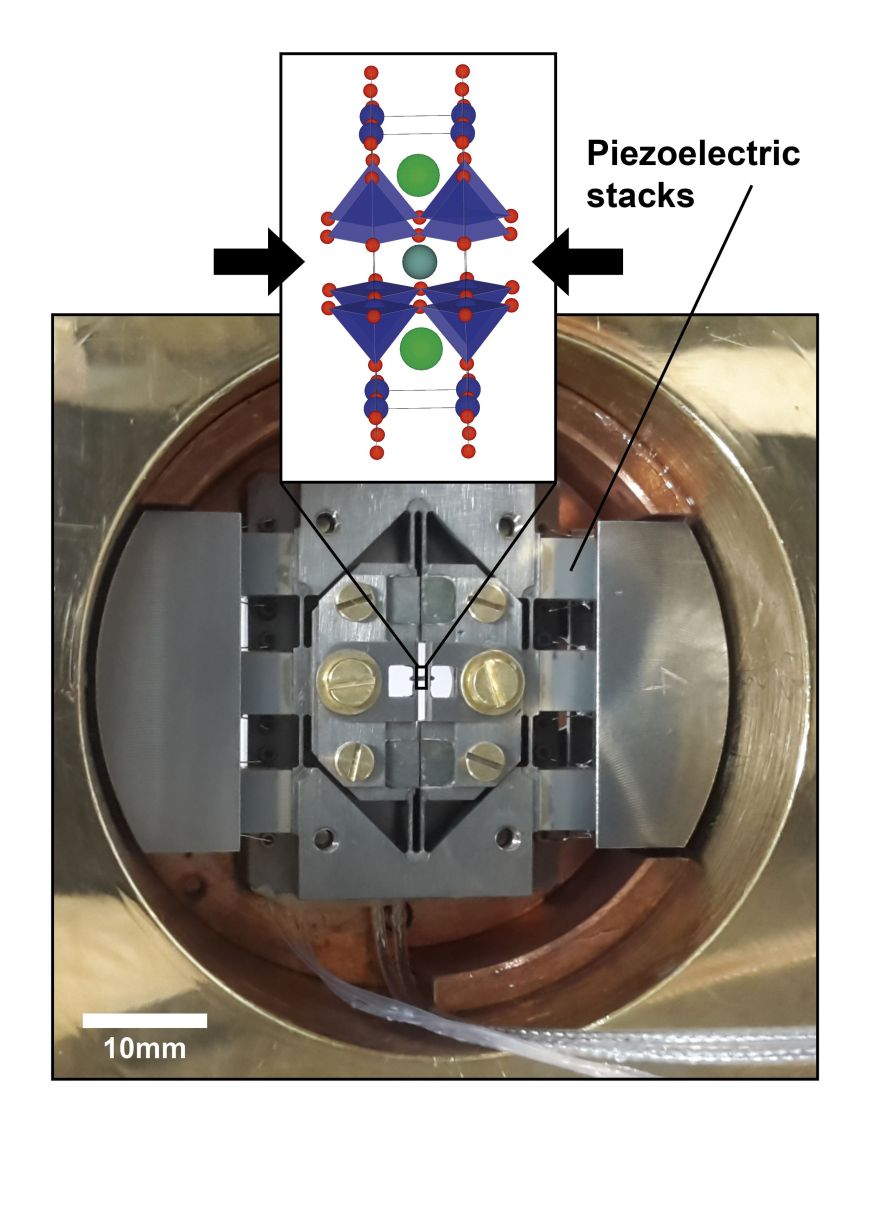High-temperature superconductors can transport electrical energy without resistance. Researchers at Karlsruhe Institute of Technology (KIT) have carried out high-resolution inelastic x-ray scattering and have found that high uniaxial pressure induces a long-range charge order competing with superconductivity. Their study opens up new insights into the behavior of correlated electrons. The researchers report on it in the Science journal (DOI: 10.1126/science.aat4708).
Transporting current without losses – superconductors make it possible but only below a certain critical temperature. Conventional superconductors need to be cooled down to almost absolute zero – minus 273 degrees Celsius – and even the so-called high-temperature superconductors still need temperatures of around minus 200 degrees Celsius to transport current without resistance. Despite this, superconductors are already used in various areas (superconducting magnets, frequency filters, high density power lines). To develop superconductors that work at even higher temperatures – possibly up to room temperature – and therefore significantly contribute to an efficient energy supply, electronic states and processes involved in the formation of the superconducting condensate need to be understood at a fundamental level.
Researchers led by Professor Matthieu Le Tacon, director of the Institute of Solid-State Physics (IFP) at KIT, have now made a significant step forward: they have shown that high uniaxial pressure can be used to tune the competing states in a high-temperature superconductor. In addition to IFP at KIT, the Max Planck Institute for Solid State Research in Stuttgart, the Max Planck Institute for Chemical Physics of Solids in Dresden, the European Synchrotron Radiation Facility (ESRF) in Grenoble, France, and the Universidad Nacional de la Plata in Argentina took part in the study. The results are presented in the Science journal.
Using high-resolution inelastic x-ray scattering, the scientists examined a high-temperature cuprate superconductor, YBa2Cu3O6.67. In this complex compound, copper and oxygen atoms form two-dimensional structures. Changing the charge carrier concentration in these planes yields a variety of electronic phases including superconductivity and charge orders.
In the charge ordered state, the electrons ‘crystallize’ into stripe-shaped nanostructures. This electronic state is usually observed in these materials when superconductivity is suppressed using very large magnetic fields, making it hard to investigate using conventional spectroscopic tools.
Inducing this state in YBa2Cu3O6.67 using uniaxial pressure instead of magnetic fields allows to study its relationship to superconductivity using x-ray scattering, as the researchers from Karlsruhe, Stuttgart, Dresden, Grenoble and La Plata discovered in their work. They have in particular been able to identified strong anomalies of the lattice excitation conneted to the formation of the charge order. “Our results provide new insights into the behavior of electrons in correlated electron materials and into the mechanisms yielding to high-temperature superconductitivity” explains Professor Matthieu Le Tacon from KIT. “They also show that uniaxial pressure has the potential to control the order of the electrons in such materials.”
Original publication:
H.-H. Kim, S. M. Souliou, M. E. Barber, E. Lefrancois, M. Minola, M. Tortora, R. Heid, N. Nandi, R. A. Borzi, G. Garbarino, A. Bosak, J. Porras, T. Loew, M. König, P. M. Moll, A. P. Mackenzie, B. Keimer, C. W. Hicks, M. Le Tacon: Uniaxial Pressure Control of Competing Orders in a High Temperature Superconductor. Science, 2018. DOI: 10.1126/science.aat4708. (Abstract at Http://science.sciencemag.org/content/362/6418/1040)
In close partnership with society, KIT develops solutions for urgent challenges – from climate change, energy transition and sustainable use of natural resources to artificial intelligence, sovereignty and an aging population. As The University in the Helmholtz Association, KIT unites scientific excellence from insight to application-driven research under one roof – and is thus in a unique position to drive this transformation. As a University of Excellence, KIT offers its more than 10,000 employees and 22,800 students outstanding opportunities to shape a sustainable and resilient future. KIT – Science for Impact.

